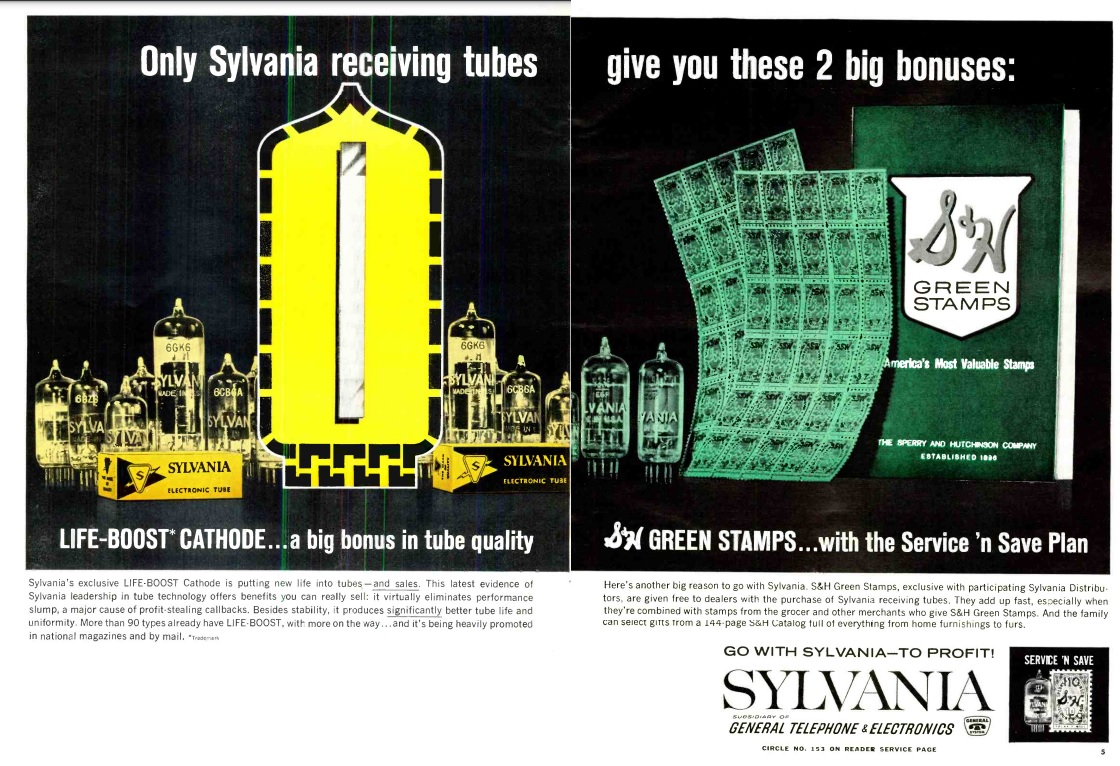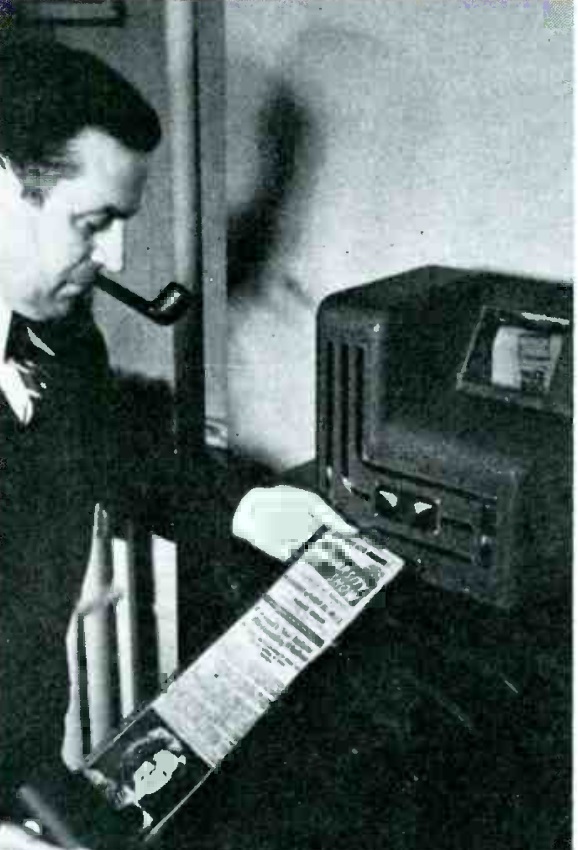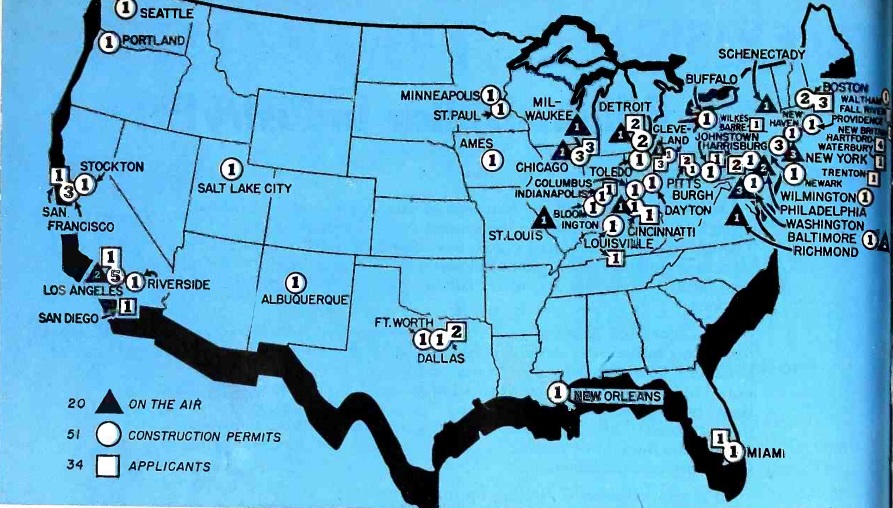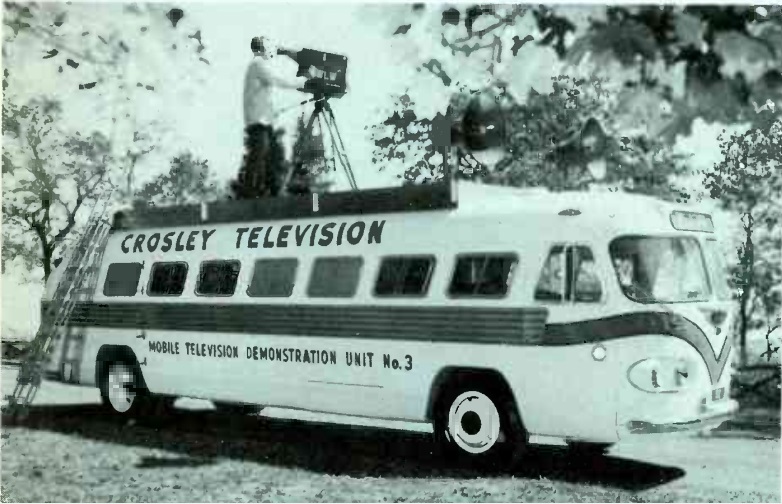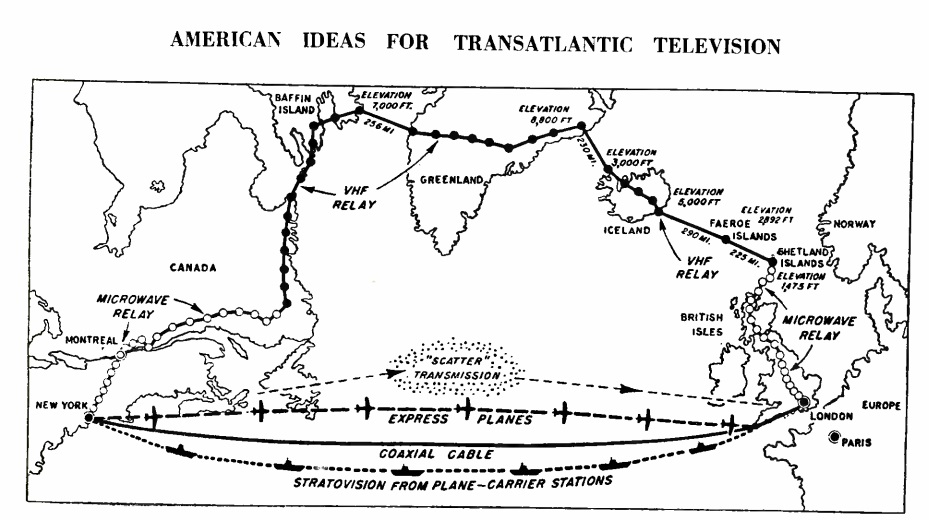 Seventy years ago this month, the October 1952 issue of the British Wireless World carried this illustration showing possible methods of linking American and European television. The diagram had actually first appeared two months earlier in the August 1952 issue of Tele-Tech as part of an open letter to the President of the United States (which would have been Harry S Truman) imploring action on TV networking with Europe and South America. According to the magazine, American homes would be able to view the great events of Europe, live, but “the underprivileged of Europe can be shown the wonderful richness of life in America.”
Seventy years ago this month, the October 1952 issue of the British Wireless World carried this illustration showing possible methods of linking American and European television. The diagram had actually first appeared two months earlier in the August 1952 issue of Tele-Tech as part of an open letter to the President of the United States (which would have been Harry S Truman) imploring action on TV networking with Europe and South America. According to the magazine, American homes would be able to view the great events of Europe, live, but “the underprivileged of Europe can be shown the wonderful richness of life in America.”
The diagram showed the potential methods, the first of which being an “airplane-relay between a dozen or more express planes continuously flying a regular route across the ocean,” presumably carrying 16-mm film.
The next idea was Stratovision, the use of a string of aircraft aloft, each relaying the signal to the next plane. As we previously showed, this system was tested, and even used to a certain extent, in the United States. But doing it over the Atlantic would require a set of aircraft carriers on which the planes could land, which would likely make the idea much less feasible.
The next idea was a string of VHF relay stations through Labrador, Baffin Island, Greenland, Iceland, the Faeroe Islands, and the Shetland Islands. The longest link would be 290 miles, meaning that the idea might be feasible. If this idea sounds familiar, it’s because it’s similar to one we talked about earlier, one proposed by David Sarnoff in 1951, although his plan envisioned the link going the other way, over the Bering Strait. Other ideas included a submarine coaxial cable, or scatter transmission, essentially the use of brute force to propagate VHF signals over the horizon. It also mentioned “miscellaneous marginal proposals,” such as use of moon reflections, which of course depended on the moon being visible over both continents, which would happen for about five hours per day.
One of the first transatlantic broadcasts was the coronation of Queen Elizabeth the following year. It was first seen on American television courtesy of 16-mm film flown by the RAF to Gander, Newfoundland, to the CBC, which was then picked up by American networks. The first live transatlantic broadcast didn’t take place until 1962, and it relied upon a method not anticipated by the 1952 article, namely, the use of the Telstar 1 satellite. While Telstar was the first transatlantic use of satellite, it should be pointed out that it wasn’t the first television transmission by satellite. Those honors go to Echo 1, which successfully relayed signals via a passive reflector between the east and west coasts of the U.S.

 Seventy years ago today, the May 11, 1953, issue of Life magazine gave Americans this sneak peak at what color television was going to look like. Specifically, it was the compatible color system from RCA (NTSC), which could be viewed on existing black and white sets. The magazine noted that a competing system from CBS had been approved, but was not compatible, and had been shelved by CBS itself. The magazine predicted that approval for RCA’s system would take place sometime in 1954. The approval actually took place later in 1953, and the first sets were on the market in 1954.
Seventy years ago today, the May 11, 1953, issue of Life magazine gave Americans this sneak peak at what color television was going to look like. Specifically, it was the compatible color system from RCA (NTSC), which could be viewed on existing black and white sets. The magazine noted that a competing system from CBS had been approved, but was not compatible, and had been shelved by CBS itself. The magazine predicted that approval for RCA’s system would take place sometime in 1954. The approval actually took place later in 1953, and the first sets were on the market in 1954.
